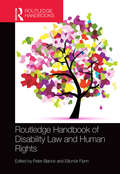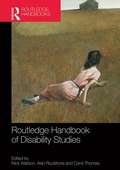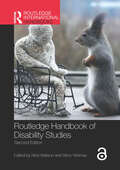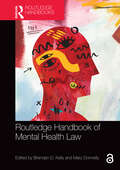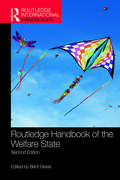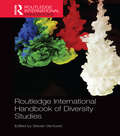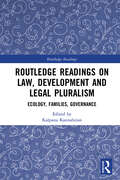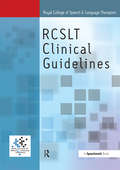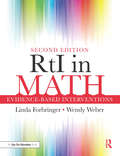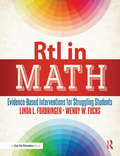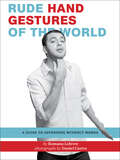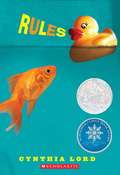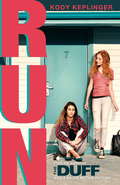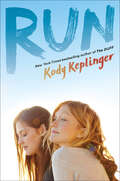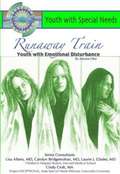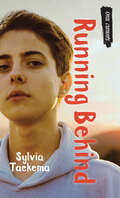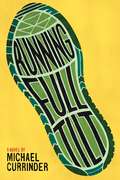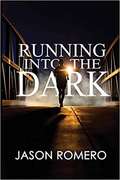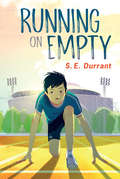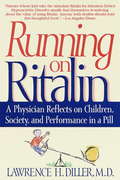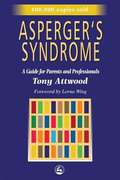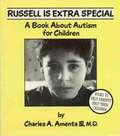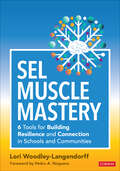- Table View
- List View
Routledge Handbook of Disability Law and Human Rights
by Peter Blanck Eilionóir FlynnThis handbook provides a comprehensive and authoritative state-of-the-art review of the current and emerging research and policy on disability law. Bringing together a team of respected and experienced experts, the handbook offers a range of jurisdictional and multidisciplinary perspectives. The authors consider historical and contemporary, as well as comparative perspectives of disability law. Divided into three parts, the contributors provide a comprehensive reference to the theoretical underpinnings, ongoing debates and emerging fields within the subject. The study provides a strong basis for consideration of contemporary disability law, its research foundations, and progressive developments in the area. The book incorporates interdisciplinary and comparative country perspectives to capture the breadth of current discourse on disability law. This handbook provides a valuable resource for a wide range of scholars, public and private researchers, NGOs, and practitioners working in the area of disability law, and across national and transnational disability schemes. The work will be of important interest to those in the fields of sociology, history, psychology, economics, political science, rehabilitation sciences, medicine, technology, and law, among others.
Routledge Handbook of Disability Studies
by Carol Thomas Alan Roulstone Nick WatsonThe Routledge Handbook of Disability Studies takes a multidisciplinary approach to disability and provides an authoritative and up-to-date overview of the main issues in the field around the world today. Adopting an international perspective and consisting entirely of newly commissioned chapters arranged thematically, it surveys the state of the discipline, examining emerging and cutting edge areas as well as core areas of contention. Divided in five sections, this comprehensive handbook covers: different models and approaches to disability how key impairment groups have engaged with disability studies and the writings within the discipline policy and legislation responses to disability studies and to disability activism disability studies and its interaction with other disciplines, such as history, philosophy and science and technology studies disability studies and different life experiences, examining how disability and disability studies intersects with ethnicity, sexuality, gender, childhood and ageing. Containing chapters from an international selection of leading scholars, this authoritative handbook is an invaluable reference for all academics, researchers and more advanced students in disability studies and associated disciplines such as sociology, health studies and social work.
Routledge Handbook of Disability Studies
by Nick Watson Simo VehmasThis fully revised and expanded second edition of the Routledge Handbook of Disability Studies takes a multidisciplinary approach to disability and provides an authoritative and up-to-date overview of the main issues in the field around the world today. Adopting an international perspective and arranged thematically, it surveys the state of the discipline, examining emerging and cutting-edge areas as well as core areas of contention. Divided in five parts, this comprehensive handbook covers: Different models and approaches to disability. How key impairment groups have engaged with disability studies and the writings within the discipline. Policy and legislation responses to disability studies and to disability activism. Disability studies and its interaction with other disciplines, such as history, philosophy, sport, and science and technology studies. Disability studies and different life experiences, examining how disability and disability studies intersects with ethnicity, sexuality, gender, childhood and ageing. Containing 15 revised chapters and 12 new chapters from an international selection of leading scholars, this authoritative handbook is an invaluable reference for all academics, researchers, and more advanced students in disability studies and associated disciplines such as sociology, health studies and social work.
Routledge Handbook of Disability Studies
by Nick Watson Simo VehmasThis fully revised and expanded second edition of the Routledge Handbook of Disability Studies takes a multidisciplinary approach to disability and provides an authoritative and up-to-date overview of the main issues in the field around the world today. Adopting an international perspective and arranged thematically, it surveys the state of the discipline, examining emerging and cutting-edge areas as well as core areas of contention.Divided in five parts, this comprehensive handbook covers: Different models and approaches to disability. How key impairment groups have engaged with disability studies and the writings within the discipline. Policy and legislation responses to disability studies and to disability activism. Disability studies and its interaction with other disciplines, such as history, philosophy, sport, and science and technology studies. Disability studies and different life experiences, examining how disability and disability studies intersects with ethnicity, sexuality, gender, childhood and ageing. Containing 15 revised chapters and 12 new chapters from an international selection of leading scholars, this authoritative handbook is an invaluable reference for all academics, researchers, and more advanced students in disability studies and associated disciplines such as sociology, health studies and social work.Chapter 6 of this book is freely available as a downloadable Open Access PDF at http://www.taylorfrancis.com under a Creative Commons Attribution-Non Commercial-No Derivatives (CC-BY-NC-ND) 4.0 license.
Routledge Handbook of Mental Health Law (Routledge Handbooks in Law)
by Brendan D. Kelly and Mary DonnellyMental health law is a rapidly evolving area of practice and research, with growing global dimensions. This work reflects the increasing importance of this field, critically discussing key issues of controversy and debate, and providing up-to-date analysis of cutting-edge developments in Africa, Asia, Europe, the Americas, and Australia. This is a timely moment for this book to appear. The United Nations’ Convention on the Rights of Persons with Disabilities (2006) sought to transform the landscape in which mental health law is developed and implemented. This Convention, along with other developments, has, to varying degrees, informed sweeping legislative reforms in many countries around the world. These and other developments are discussed here. Contributors come from a wide range of countries and a variety of academic backgrounds including ethics, law, philosophy, psychiatry, and psychology. Some contributions are also informed by lived experience, whether in person or as family members. The result is a rich, polyphonic, and sometimes discordant account of what mental health law is and what it might be. The Handbook is aimed at mental health scholars and practitioners as well as students of law, human rights, disability studies, and psychiatry, and campaigners and law- and policy-makers.
Routledge Handbook of Mental Health Law (Routledge Handbooks in Law)
by Brendan D. Kelly and Mary DonnellyMental health law is a rapidly evolving area of practice and research, with growing global dimensions. This work reflects the increasing importance of this field, critically discussing key issues of controversy and debate, and providing up-to-date analysis of cutting-edge developments in Africa, Asia, Europe, the Americas, and Australia.This is a timely moment for this book to appear. The United Nations’ Convention on the Rights of Persons with Disabilities (2006) sought to transform the landscape in which mental health law is developed and implemented. This Convention, along with other developments, has, to varying degrees, informed sweeping legislative reforms in many countries around the world. These and other developments are discussed here. Contributors come from a wide range of countries and a variety of academic backgrounds including ethics, law, philosophy, psychiatry, and psychology. Some contributions are also informed by lived experience, whether in person or as family members. The result is a rich, polyphonic, and sometimes discordant account of what mental health law is and what it might be.The Handbook is aimed at mental health scholars and practitioners as well as students of law, human rights, disability studies, and psychiatry, and campaigners and law- and policy-makers.
Routledge Handbook of the Welfare State (Routledge International Handbooks)
by Bent GreveForty-five contributions from renowned international specialists in the field provide readers with expert analysis of the core issues related to the welfare state, including regional depictions of welfare states around the globe. The second edition of the Routledge Handbook of the Welfare State combines essays on methodologies, core concepts and central policy areas to produce a comprehensive understanding of what ‘the welfare state’ means around the world. In the aftermath of the credit crunch, the Handbook addresses some of the many questions about the welfare state. This second edition has been thoroughly revised and updated to include an in-depth analysis of societal changes in recent years. New articles can be found on topics such as: the impact of ideas, well-being, migration, globalisation, India, welfare typologies, homelessness and long-term care. This volume will be an invaluable reference book for students and scholars throughout the social sciences, particularly in sociology, social policy, public policy, international relations, politics and gender studies.
Routledge International Handbook of Diversity Studies (Routledge International Handbooks)
by Steven VertovecIn recent years the concept of ‘diversity’ has gained a leading place in academic thought, business practice and public policy worldwide. Although variously used, ‘diversity’ tends to refer to patterns of social difference in terms of certain key categories. Today the foremost categories shaping discourses and policies of diversity include race, ethnicity, religion, gender, disability, sexuality and age; further important notions include class, language, locality, lifestyle and legal status. The Routledge Handbook of Diversity Studies will examine a range of such concepts along with historical and contemporary cases concerning social and political dynamics surrounding them. With contributions by experts spanning Sociology, Anthropology, Political Science, History and Geography, the Handbook will be a key resource for students, social scientists and professionals. It will represent a landmark volume within a field that has become, and will continue to be, one of the most significant global topics of concern throughout the twenty-first century.
Routledge Readings on Law, Development and Legal Pluralism: Ecology, Families, Governance (Routledge Readings)
by Kalpana KannabiranRoutledge Readings on Law, Development and Legal Pluralism presents some of the finest essays on social justice, environment, rights and governance. With a lucid new Introduction, it covers a vast range of issues and offers a compelling guide to understanding the harm and risk relating to biodiversity, agro-ecology, disaster, and forest rights. The book covers critical themes such as ecology, families and governance and establishes the trajectory of contemporary ecology and law in South Asia. The thirteen chapters in the volume, divided into three sections, trace violence and marginality in the plurality of families and their laws in India, as well as discuss community-based just practices. With debates on development, governance and families, the book highlights the politics and practices of law making, law reform and law application. This multi-disciplinary volume foregrounds the politics and plural lives of/in law by including perspectives from major authors who have contributed to the academic and/or policy discourse of the subject. This book will be useful to students, scholars, policymakers, practitioners and the general reader interested in a nuanced understanding of law, especially those studying law, marginality, kinship and indigeneity studies. It will serve as essential reading for those in law, socio-legal studies, environment studies and ecology, social exclusion studies, development studies, South Asian studies, human rights, jurisprudence and constitutional studies, gender studies, history, politics, conflict and peace studies, sociology and social anthropology. It will also appeal to legal historians and practitioners of law, environmentalists, and those in public administration.
Royal College of Speech & Language Therapists Clinical Guidelines
by Sylvia Taylor-GohThe aim of these guidelines is to provide clinicians, managers and service users with statements regarding the clinical management of specific disorders or conditions and in some instances, particular populations. The guidelines assist in the clinical decision-making process by providing information on what is considered to be the minimum best practice. Each guideline contains recommendations that are explicit statements providing specific clinical guidance on the assessment and management of each area. Each recommendation is supported by evidence from the literature or is based upon the consensus of clinical experts. Sections include: Pre-School children with communication, language speech needs; School-aged children with speech, language communication difficulties; Autistic spectrum disorders; Cleft palate and velopharyngeal abnormalities; Clinical voice disorders; Deafness/hearing loss; Disorders of fluency; Disorders of feeding, eating, drinking swallowing (dysphagia); Disorders of mental health dementia; Dysarthria; Aphasia; Head neck cancer. A Position Statement on working with Adults with Learning Disabilities is included in place of a guideline. Every practising UK speech language therapist needs to have access to these guidelines, and they will also be of value to health, social and educational professionals that may become involved with individuals who have a communication or swallowing disorder.
RtI in Math: Evidence-Based Interventions
by Linda Forbringer Wendy WeberLearn how to help K–8 students who struggle in math. Now in its second edition, this book provides a variety of clear, practical strategies that can be implemented right away to boost student achievement. Discover how to design lessons that work with struggling learners, implement math intervention recommendations from the Institute of Education Sciences Practice Guides, the National Center on Intensive Intervention, and CEC, use praise and self-motivation more effectively, develop number sense and computational fluency, teach whole numbers and fractions, increase students’ problem-solving abilities, and more! This edition features an all-new overview of effective instructional practices to support academic engagement and success, ideas for intensifying instruction within tiered interventions, and a detailed set of recommendations aligned to both CCSSM and CEC/CEEDAR’s High-Leverage Practices to help support students struggling to meet grade-level expectations. Extensive, current examples are provided for each strategy, as well as lesson plans, games, and resources.
RtI in Math: Evidence-Based Interventions for Struggling Students
by Wendy Fuchs Linda ForbringerLearn how to help K–8 students who struggle in math. This book provides a variety of clear, practical strategies that can be implemented right away to boost student achievement. You will find out how to design lessons that work with struggling learners, implement the recommendations for math intervention from the What Works Clearinghouse, use praise and self-motivation more effectively, develop number sense and computational fluency, teach whole numbers and fractions, increase students’ problem-solving abilities, and more! Extensive examples are provided for each strategy, as well as lesson plans, games, and resources.
Rude Hand Gestures of the World: A Guide To Offending Without Words
by Romana LefevreWith this illustrated guide, discover what hand gestures can offend others around the world—and whether you avoid making them or not is up to you.A hand gesture is arguably the most effective form of expression, whether you’re defaming a friend’s mother or telling a perfect stranger to get lost. Learn how to go beyond just flipping the bird with this illustrated guide to rude hand gestures all around the world, from asking for sex in the Middle East to calling someone crazy in Italy. Detailed photographs of hand models and subtle tips for proper usage make Rude Hand Gestures of the World the perfect companion for globe-trotters looking to offend.“If you’ve resolved to make the most of your travels, a copy of Rude Hand Gestures of the World to know what gestures you should avoid while abroad. Better safe than sorry!” —Buzzfeed
Rules
by Cynthia LordThis 2007 Newbery Honor Book is a humorous and heartwarming debut about feeling different and finding acceptance. Now in After Words paperback! Twelve-year-old Catherine just wants a normal life. Which is near impossible when you have a brother with autism and a family that revolves around his disability. She's spent years trying to teach David the rules from "a peach is not a funny-looking apple" to "keep your pants on in public"---in order to head off David's embarrassing behaviors. But the summer Catherine meets Jason, a surprising, new sort-of friend, and Kristi, the next-door friend she's always wished for, it's her own shocking behavior that turns everything upside down and forces her to ask: What is normal?
Run
by Kody KeplingerBo Dickinson is a girl with a wild reputation, a deadbeat dad, and an alcoholic mom. Everyone in town knows the Dickinsons are a bad lot, but Bo doesn't care what anyone thinks. Agnes Atwood has never stayed out past ten p.m., never gone on a date and never broken any of her parents' overbearing rules. Rules that are meant to protect their legally blind daughter - but Agnes isn't quite sure what they are protecting her from.Despite everything, Bo and Agnes become best friends. And it's the sort of friendship that runs truer and deeper than anything else. So when Bo shows up in the middle of the night, police sirens wailing in the distance, desperate to get out of town, Agnes doesn't hesitate to take off with her. But running away and not getting caught will require stealing a car, tracking down Bo's dad, staying ahead of the authorities, and - worst of all - confronting some ugly secrets.A story about the ferocity of friendship and the risks we'll take to save our friends ... And ourselves.
Run (Scholastic Press Novels)
by Kody KeplingerFrom the New York Times–bestselling author of The Duff. “A good unlikely friendship story . . . and a nuanced portrait of disability and small-town life.” —School Library JournalBo Dickinson is a girl with a wild reputation, a deadbeat dad, and a mama who’s not exactly sober most of the time. Everyone in town knows the Dickinsons are a bad lot, but Bo doesn’t care what anyone thinks.Agnes Atwood has never gone on a date, never even stayed out past ten, and never broken any of her parents’ overbearing rules. Rules that are meant to protect their legally blind daughter—protect her from what, Agnes isn’t quite sure.Despite everything, Bo and Agnes become best friends. And it’s the sort of friendship that runs truer and deeper than anything else. So when Bo shows up in the middle of the night, with police sirens wailing in the distance, desperate to get out of town, Agnes doesn’t hesitate to take off with her. But running away and not getting caught will require stealing a car, tracking down Bo’s dad, staying ahead of the authorities, and—worst of all—confronting some ugly secrets.“Bo and Agnes’ unlikely friendship rings true and strong . . . An ambitiously structured road-trip novel.” —Kirkus Reviews“There’s plenty to recommend . . . though the most effective thing here remains Agnes’ and Bo’s voices and the strength of their realistically tumultuous relationship.” ––Booklist
Runaway Train: Youth with Emotional Disturbance (Youth with Special Needs)
by Autumn LibalSheila leapt to her feet and tore her sheets from her bed. "Why can't anyone leave me alone?" she screamed. Her lamp crashed to the ground, shards of brown pottery smashing in every direction. She kicked the broken pieces, sending them spinning, then grabbed the nightstam heaved it onto the remains of the lamp. Her screams continued as she grabbed three jars of paint from her dresser. "I HATE YOU!" The jars exploded against the door like punctuation marks for her words. Black, red, and blue paint oozed down the wood, a grand finale to Sheila's performance. Panting, Sheila stared at the broken glass and pottery littering her bedroom floor. As the tears finally bubbled up, Sheila felt a strange sense of awe descending upon her. "What is wrong with me?" she whispered as she sank down on her bed. The tumultuous emotions of youth can be challenging to anyone, but for young people with emotional disturbance, the trials of growing up can be devastating. Young people with emotional disturbance can face many roadblocks in the quest to understand themselves and to gain understanding from others. In Runaway Train: Youth with Emotional Disturbance, you will learn about different causes of emotional disturbance, the special needs of youth who have them, and what can be done to help young people overcome emotional difficulties. Through the story of Sheila, you will learn what it is like to have an emotional disturbance, the dangers these conditions can pose, and the successes as well as the failures of systems currently available to assist youth with emotional disturbance.
Running Behind (Orca Currents)
by Sylvia TaekemaEven though he was once his biggest rival, Jake Jarvis is thrilled when Spencer Solomon agrees to join the Diamonds cross-country team to compete in the Barry's Bay provincial championships. Everyone is pumped, everyone is focused, and Jake has to admit, he really likes their chances. At the last moment, Spencer informs the team that he can't go. Jake is furious. But when Spencer explains that he's worried about leaving his wheelchair-bound father alone, Jake gets to work on finding a solution to get Spencer and the Diamonds back on track. This short novel is a high-interest, low-reading level book for middle-grade readers who are building reading skills, want a quick read or say they don’t like to read!
Running Full Tilt
by Michael CurrinderPraised by Jack Gantos, author of Dead End in Norvelt, as "a quick read with a kick at the finish," this debut novel sensitively and memorably captures a teen runner's relationship with his autistic older brother.Like most siblings, Leo and Caleb have a complicated relationship. But Caleb's violent outbursts literally send Leo running. When the family is forced to relocate due to Caleb's uncontrollable behavior, Leo tries to settle into a new school, joining the cross-country team and discovering his talent for racing and endurance for distance. Things even begin to look up for Leo when he befriends Curtis, a potential state champion who teaches Leo strategy and introduces him to would-be girlfriend, Mary. But Leo's stability is short-lived as Caleb escalates his attacks on his brother, resentful of his sport successes and new friendships.Leo can't keep running away from his problems. But, with a little help from Curtis and Mary, he can appreciate his worth as a brother and his own capacity for growth, both on and off the field.Praise from Jack Gantos, author of Dead End in Norvelt, Hole in My Life and The Trouble With Me: "Currinder's novel, Running Full Tilt, is a fast-paced convincing drama of a young runner whose legs circle him back to the many conflicts he is trying to escape--but he can't outrun himself. A quick read with a kick at the finish."Praise from Paul Volponi, author of The Final Four, Black and White, and Rikers High:"We feel the inner strength it takes to compete on every page of this splendid narrative, until, as readers, we are running as well--engrossed, and loving every step of the journey."
Running into the Dark: A Blind Man's Record-Setting Run Across America
by Jason RomeroA man takes on the challenge of a lifetime after hitting rock bottom. He finds himself divorced, unemployed and in a deep depression when a degenerative eye condition renders him blind with limited light perception. Feeling a calling to run across America, he dedicated the next two years of his life to prepare for, and ultimately run, over 3,000 miles from California to New York in less than 60 days, averaging 51.5 miles per day, to log the 7th fastest transcontinental foot crossing in the history of the world - less than 300 people have crossed America on foot. It was, and remains the only transcontinental foot-crossing by a blind person. <P><P> This is not just a book about running. This is a story of success and failure, healing and hurting, and loss and love. It is a book about struggling with adversity, learning to not give up or give in, to accept one's self for all that one is, and is not. It is every person's story. <P><P> Running into the Dark is a manifesto about how to continue ONWARD. <P><P> Jason Romero is a highly sought after Keynote Speaker for conventions, conferences and commencements, a US Paralympian who was 4th in the world at the Paralympic World Marathon Championships in 2015, a holder of 13 world records in ultra-running, the subject of a full length documentary and an author. In addition, Jason has been an attorney, an executive at GE and a CEO of a non-profit that helps children with Autism.
Running on Empty
by S. E. DurrantA boy shoulders great responsibility for his differently abled parents in this touching middle-grade story.CJ is a runner--and when he's running, he's fast, free, and flying. It was Grandad who taught him to run, and who did a lot more, besides. Grandad always made sure things were in order around CJ's house, because his parents could not. CJ's parents are different, and because they do not have the tools to cope with certain elements of everyday life, it was Grandad who reviewed the water bill, saw to it that the electricity meter had funds, and kept everything else shipshape. But now, with Grandad's sudden passing and Aunt Joan about to have a baby, CJ knows it's up to him to make sure Mum and Dad are okay and to keep the household going. It would be a hard job for any adult, but for a kid who's also starting middle-school and trying to impress the gruff track coach . . . is staying afloat even possible? Through its heartwarming and believable characters, Running on Empty sensitively explores the dynamics of a loving family finding its way forward, and the unexpected helping hands that pitch in along the way.
Running on Ritalin: A Physician Reflects on Children, Society, and Performance in a Pill
by Lawrence H. DillerIn a book as provocative and newsworthy asListening to ProzacandDriven to Distraction,a physician speaks out on America's epidemic level of diagnoses for attention deficit disorder, and on the drug that has become almost a symbol of our times: Ritalin. In 1997 alone, nearly five million people in the United States were prescribed Ritalin--most of them young children diagnosed with attention deficit disorder. Use of this drug, which is a stimulant related to amphetamine, has increased by 700 percent since 1990. And this phenomenon appears to be uniquely American: 90 percent of the world's Ritalin is used here. Is this a cause for alarm--or simply the case of an effective treatment meeting a newly discovered need? Important medical advance--or drug of abuse, as some critics claim? Lawrence Diller has written the definitive book about this crucial debate--evenhanded, wide-ranging, and intimate in its knowledge of families, schools, and the pressures of our speeded-up society. As a pediatrician and family therapist, he has evaluated hundreds of children, adolescents, and adults for ADD, and he offers crucial information and treatment options for anyone struggling with this problem. Running on Ritalinalso throws a spotlight on some of our most fundamental values and goals. What does Ritalin say about the old conundrums of nature vs. nurture, free will vs. responsibility? Is ADD a disability that entitles us to special treatment? If our best is not good enough, can we find motivation and success in a pill? Is there still a place for childhood in the performance-driven America of the late nineties? From the Hardcover edition.
Running with Walker: A Memoir
by Robert J. HughesWhen Walker Hughes is two years old, a neurologist tells his parents that he has autism and concludes, "I have very little hope for this child." Walker's parents refuse to accept this grim prognosis. With boundless energy and breathtaking creativity they set about to enhance his skills and enrich his life. There is no miracle cure, no magic key that unlocks the door to Walker's inner world. Hughes vividly describes his son's severe disability and at the same time portrays him as an exuberant, loving, and utterly unique individual.
Russell Is Extra Special: A Book About Autism for Children
by Charles A. AmentaFor ages 4-8. Explaining autism to children can be a difficult task. This heart-warming portrayal of an autistic boy and his family will help children and their parents understand this serious developmental disorder. An introduction for parents and a list of resources supply further information. In addition, as they enjoy and identify with the family photographs so similar to their own, children will develop greater sympathy for those who may be different from themselves.
SEL Muscle Mastery: Six Tools for Building Resilience and Connection in Schools and Communities
by Lori Woodley-LangendorffSocial emotional literacy is for everyone! Adults are tasked with teaching social emotional literacy (SEL), including skills like curiosity, respect, and problem-solving, but too often we fail to acknowledge or tend to our own well-being. In SEL Muscle Mastery, you will discover six SEL Muscles™ that, when strengthened and flexed with skill, support our own emotional balance and are key to building resilient and joyful environments where we can effectively teach and kids can sustainably learn. Inside this transformative guidebook, you′ll discover: A framework for managing student behavior and classroom dynamics, finding personal fulfillment, and supporting the whole child Reflection prompts for readers to use to consider what is present in the moment and what is possible in the future Links to videos and an open-access curriculum Exercises, stories, and examples for teachers, caregivers, and community members In this beautifully illustrated book, Lori Woodley-Langendorff, a former school counselor and award-winning film producer and educational consultant, presents a powerful new toolkit to enhance your ability to navigate difficult circumstances with greater ease and joy, both in and out of the classroom.
